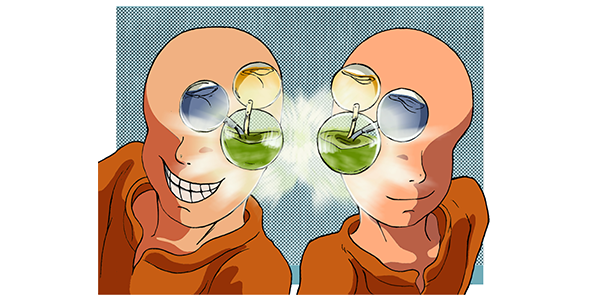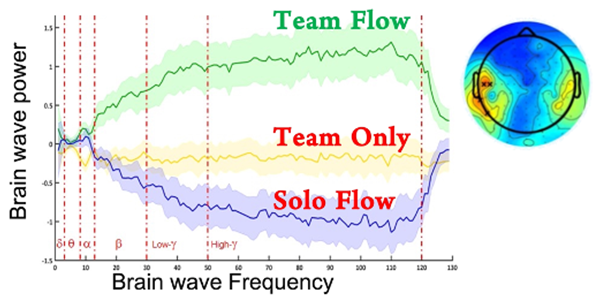You’ve probably been “in the zone” at some point in your life. But this is not limited to individuals. Groups also experience a unique brain state called “team flow.”
Now, researchers from Tohoku University and collaborators from Toyohashi University of Technology and the California Institute of Technology have unearthed the brain waves and regions that correspond to team flow, opening the door to better monitoring and prediction of team performances.
Team flow happens when team members get “in the zone” to accomplish a task together. Great teams experience this psychological phenomenon, from athletes to musicians and even professional work teams. When teamwork reaches the team flow level, one can observe the team perform in harmony, surpassing their limits.
“Team flow has been a very desirable state for groups who aim for superior performance and subjective experiences,” said Dr. Chia-huei Tseng, an associate professor at the Research Institute of Electrical Communication (RIEC) at Tohoku University. “It was a common experience for bands and sports teams to report it, but it has been difficult to bring this phenomenon to a scientific lab for objective study.”
The researchers used an EEG to measure the brain activity from 10 teams while they played a music video game together. In some trials, a partition separated the teammates so they couldn’t see each other while they played, allowing a solo flow state but preventing team flow. The research team scrambled the music in other trials, which prevented a flow state but still allowed teamwork.

The participants answered questions after each game to assess their flow level. Moreover, the researchers invented an objective neural method to evaluate the depth of the team flow experience. Then, they compared the brain activity of the participants during each condition.
The results showed team flow’s unique signature: increased beta and gamma brain waves in the middle temporal cortex, a type of brain activity linked to information processing. Teammates also had more synchronized brain activity during the team flow state compared to the regular teamwork state. ©Mohammad Shehata

Dr. Miao Cheng, who initiated this project while she was a PhD exchange student at California Institute of Technology, said that, “The search for an appropriate task took the most time. We decided on a music video game because it required minimum movements – a big advantage for the brain wave recordings.” Cheng recently joined RIEC at Tohoku University as an assistant professor and will continue to pursue her passion to unlock the mysterious science behind human communication.
The study provides a framework based on neural models that can be utilized toward more effective team-building strategies in areas where performance and pleasure are involved: business, sports, music, performing arts, video games, and entertainment. In partnership with governmental and industrial institutions, the researchers plan to use the neural signature of team flow to monitor and enhance team efficiency and, perhaps, build more productive teams.
Tseng adds, “Enhancing performance while maintaining enjoyment has many implications towards a better quality of life, including lowering the rates of depression, panic attacks, and anxiety.”
- Publication Details:
Title: Team flow is a unique brain state associated with enhanced information integration and inter-brain synchrony
Authors: Mohammad Shehata, Miao Cheng, Angus Leung, Naotsugu Tsuchiya, Daw-An Wu, Chia-huei Tseng, Shigeki Nakauchi, and Shinsuke Shimojo
Journal: eNeuro
DOI:




